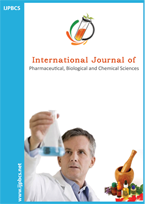FROM TRADITIONAL MEDICINE TO MODERN SCIENCE: THE NUTRITIONAL AND THERAPEUTIC POTENTIAL OF PERSICARIA CHINENSIS
Main Article Content
Abstract
Persicaria chinensis (L.) H. Gross, commonly known as Chinese knotweed, belongs to the family Polygonaceae and is a perennial herbaceous vine distributed widely across Asia and other tropical regions. This review explores its nutritional value, phytochemical composition, antioxidant activity, pharmacological properties, and traditional medicinal uses. Rich in bioactive compounds like phenolics, flavonoids, and squalene, P. chinensis demonstrates potent antioxidant, anti-inflammatory, antimicrobial, and anti-ulcer activities. Nutraceutical applications, such as antioxidant supplements and anti-microbial formulations, position this plant as a promising therapeutic agent. Future research into its mechanistic pathways, bioavailability, and clinical applications is warranted to validate its pharmaceutical potential.
Downloads
Article Details

This work is licensed under a Creative Commons Attribution-NonCommercial-ShareAlike 4.0 International License.
How to Cite
References
Sarmah P, Sarma A, Kashyap D, Mahanta M, Medhi P. Nutraceutical properties of Stellaria media and Persicaria chinensis under Brahmaputra Valley agro-climatic condition. Annals of Plant Sciences. 2014;3(8):779-82.
USDA APHIS. Weed Risk Assessment for Persicaria chinensis. Version 2. 2017.
Narasimhulu G, Reddy KK, Mohamed J. The genus Polygonum (Polygonaceae): an ethnopharmacological and phytochemical perspective. Int J Pharm Pharm Sci. 2014;6(2):21-45.
Zhang Y, Hirota SK. Reproductive biology of Persicaria chinensis. Flora. 2016; 221:25-30.
Saikia P, Chakravartee J, Rao PP. Weed control in tea plantations using Persicaria chinensis. Two and a Bud. 1994;41(1):2-11.
